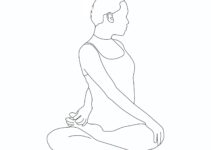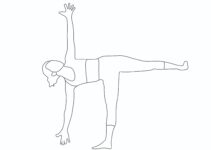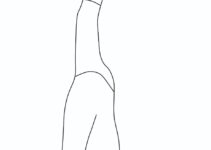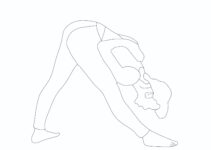Bakasana is a balancing and advanced yoga pose wherein you balance your body with the help of your arms. It consists of two words: ‘Baka’ means crane, and ‘asana’ shows Yoga pose. Therefore, it is also known as crane pose. Besides increasing concentration, it has many essential health benefits. Being an advanced yoga pose, it needs time to perfect its performance. Therefore, initially, it should start with variations. However, precautions and contraindications of the crane pose should also be considered while performing.

Difference between Bakasana and Kakasana
Both Bakasana and Kakasana are advanced yoga poses and balancing in nature. However, there is a difference between the Crane pose and the Crow Pose. In the case of Bakasana, the arms are straight, and the shins are rested upon the upper arms, while in the Crow pose, the components are slightly bent, and the shins are relaxed upon the elbows.
Bakasana step-by-step
Bakasana is a balanced and advanced yoga pose. But this can be done quickly by practising and following simple steps.
- First of all, sit in Kagasana.
- Place your hands on the ground in front of your feet.
- Press the arms downward and lift the legs above the ground while keeping your knees bent.
- Ensure that your shins are properly rested upon your upper arms.
- Maintain it as long as you can with normal breathing.
- It is one cycle; do it 3 to 5 five times.
Bakasana benefits
- It is one of the important balancing yoga poses, which helps maintain the excellent health of various body organs.
- It helps to develop balance in the body.
- Strengthens the shoulder, thereby helping in removing shoulder disorders.
- Good for heart and cardiac muscles.
- It is said that crane pose is the best asana for increasing concentration.
- It helps expand lungs and is thus good for those with respiratory problems and congestions.
- Its regular practice strengthens your hands and makes the arms stronger.
- It is also good for kids as it develops many faculties of the children.
- Strengthen the wrist and forearms by stretching the upper back.
- Its practice boosts your confidence.
Bakasana contraindications
- This asana should not be practised in case of high blood pressure.
- People suffering from heart disease should avoid it.
- Skip it while having shoulder pain, wrist or shoulder injury or carpal tunnel syndrome.
- During pregnancy, it shouldn’t be performed.
Precaution of Bakasana
- It should not be practised in a hurry.
- Excess thrust shouldn’t be exerted on the wrists.
- Don’t bend yourself forward to lose balance.
- Don’t spread your elbows on both sides while in the pose.
Modifications and variations
- If you are experiencing difficulty in performing the pose in the initial stage, it is better to do it with some variations and modifications.
- One can start this asana by placing a block under the feet.
- Parsva Bakasana, wherein one thigh rests on the opposite arm while the other is kept above it.
- Eka Pada Bakasana, wherein one shin rests on the upper arm while the other leg is kept straight back.
Follow up asana
- Chaturanga Dandasana
- Salamba Sirsasana
Adho Mukha Svanasana
Different names of Bakasana
- Crane pose
- Frog pose





